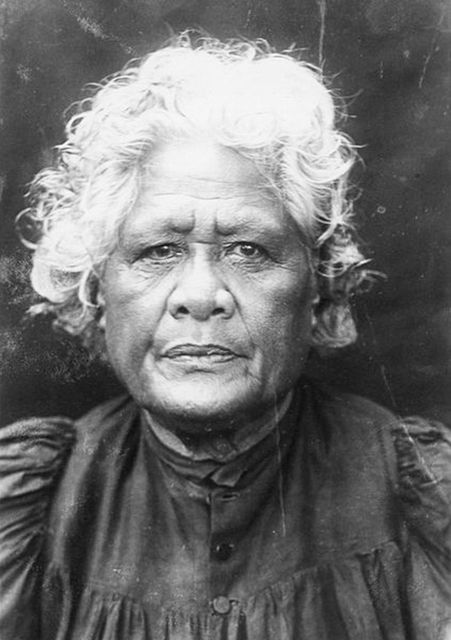At age 7, Kauai-born Mary Maihiai (1830?-1912) set out from Kauai with her uncle and five other men to “go look see” Molokai in a canoe, which was soon driven out of sight of land in a great storm. After
At age 7, Kauai-born Mary Maihiai (1830?-1912) set out from Kauai with her uncle and five other men to “go look see” Molokai in a canoe, which was soon driven out of sight of land in a great storm.
After 10 days and nights of drifting and suffering from thirst and hunger, Mary and her companions were seen at last by a sailor onboard a sailing ship bound for China.
They were taken aboard ship, where the captain’s wife gave Mary the task of caring for her little daughter, while her uncle and the other men were given work.
When the ship reached the Mariana Islands, the five men were put ashore at their request, and at Macao, China, Mary and her uncle were turned over to a missionary — likely the Rev. W. A. Brown.
In China, her uncle died, but Mary traveled about that great country for several years in the company of the Rev. Brown and his wife and daughter, Nellie, of whom she was made nurse.
Then around 1846, she accompanied the Browns to New York.
Two years later, Mary — now a young woman of perhaps 18 — departed New York on the ship “Hope Well” for the gold field of California with a missionary family named Bates.
She reached Monterey, Cali., in 1849 by way of Cape Horn and spent several months in Mexican mining towns with the Bates family before setting sail for the Hawaiian Islands, of which she had long been yearning to return.
Following her arrival in Honolulu in early 1850, Mary was reunited with her mother, sisters, brothers and relatives, who’d sailed from Kauai to Honolulu to celebrate her homecoming with a grand luau attended by hundreds of fellow Hawaiians.
Mary settled in Honolulu, married four husbands over the years, and as of 1901, could be found living alone in a little house behind a high board fence on Vineyard Street, between Nuuanu and Fort streets.


